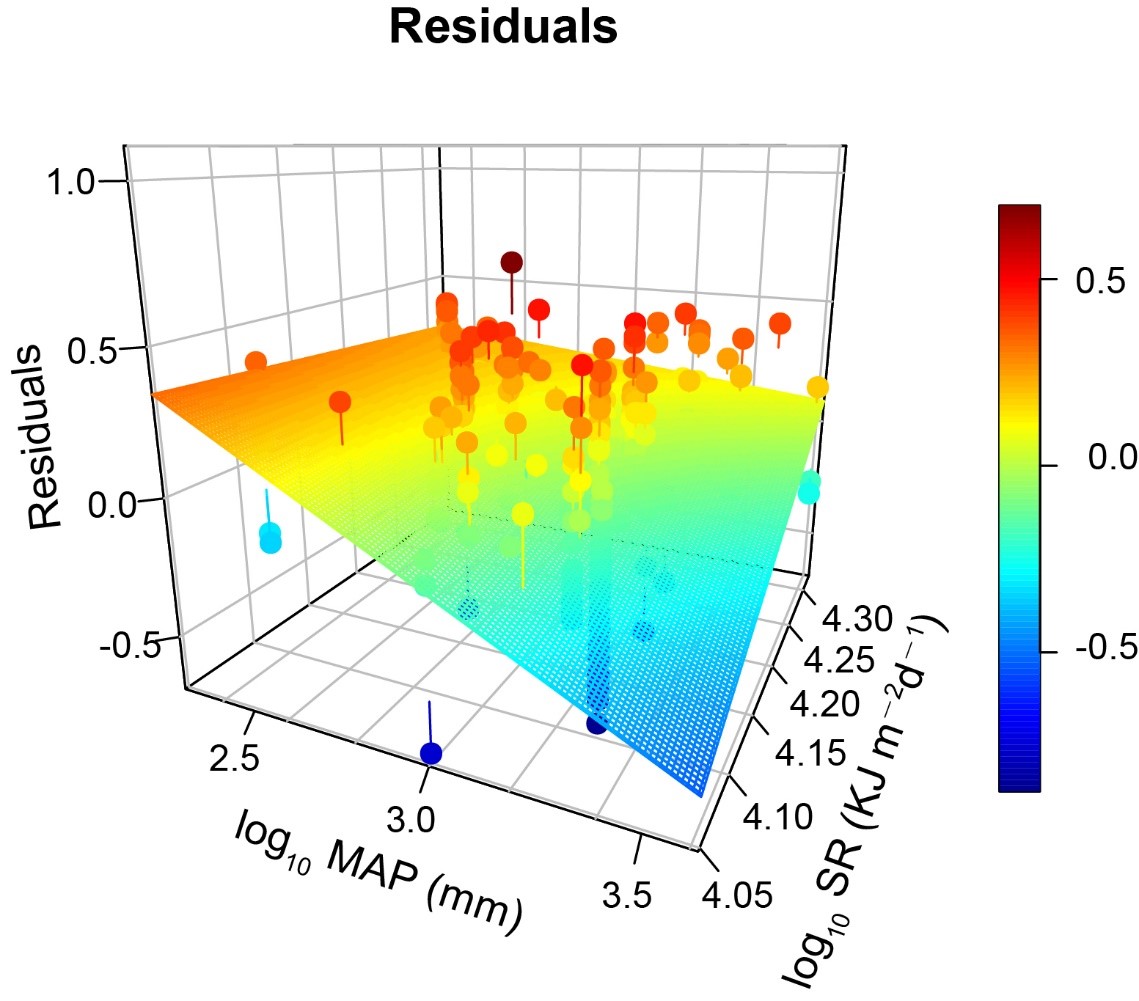Precipitation, solar radiation, and their interaction modify leaf hydraulic efficiency-safety trade-off across angiosperms
Identifying trade-offs is necessary for understanding trait variation and ecological strategies across species and habitats. In theory, there is a trade-off between hydraulic efficiency and safety. However, the strength and direction of this trade-off at the leaf level are not consistent across studies, and habitat climate may impact this trade-off. To explore how climates modify the leaf hydraulic efficiency-safety trade-off across angiosperms at the global scale, researchers from South China Botanical Garden, Chinese Academy of Sciences compiled a leaf hydraulic efficiency and safety dataset for 362 species from 81 sites world-wide, with 280 paired observations of both traits. They found that the leaf hydraulic efficiency-safety trade-off was weak (R2 = 0.144) at the global scale. Mean annual precipitation and solar radiation modified the trade-off. Species from dry and high solar radiation habitats (e.g., desert, tropical savanna) were generally located above the trade-off line, indicating that these species tended to have greater leaf hydraulic safety and efficiency than species from wet habitats with low solar radiation (e.g., subtropical monsoon forest and montane rainforest). Leaves with high vein density, dry leaf mass per area, and osmotic regulation enhanced hydraulic safety without compromising their efficiency.
These results suggest that differences in leaf traits and climate across species and habitats were associated with meaningful shifts in this trade-off, which would seemingly allow for a wide diversity of hydraulic strategies, thus engendering plant success across the world’s terrestrial habitats. This work has been published online in New Phytologist: http://doi.org/10.1111/nph.20213.

Fig.1 Predicted interactive effects between mean annual precipitation (MAP) and mean annual solar radiation (SR) on the trade-off residuals. The effects of the interaction between MAP and SR were estimated using a multiple linear mixed regression model. The predicted surface of residuals arising from the interaction between MAP and SR resembles a twisted plane (P< 0.05).
File Download: